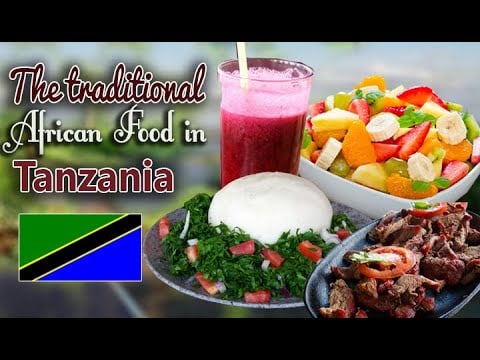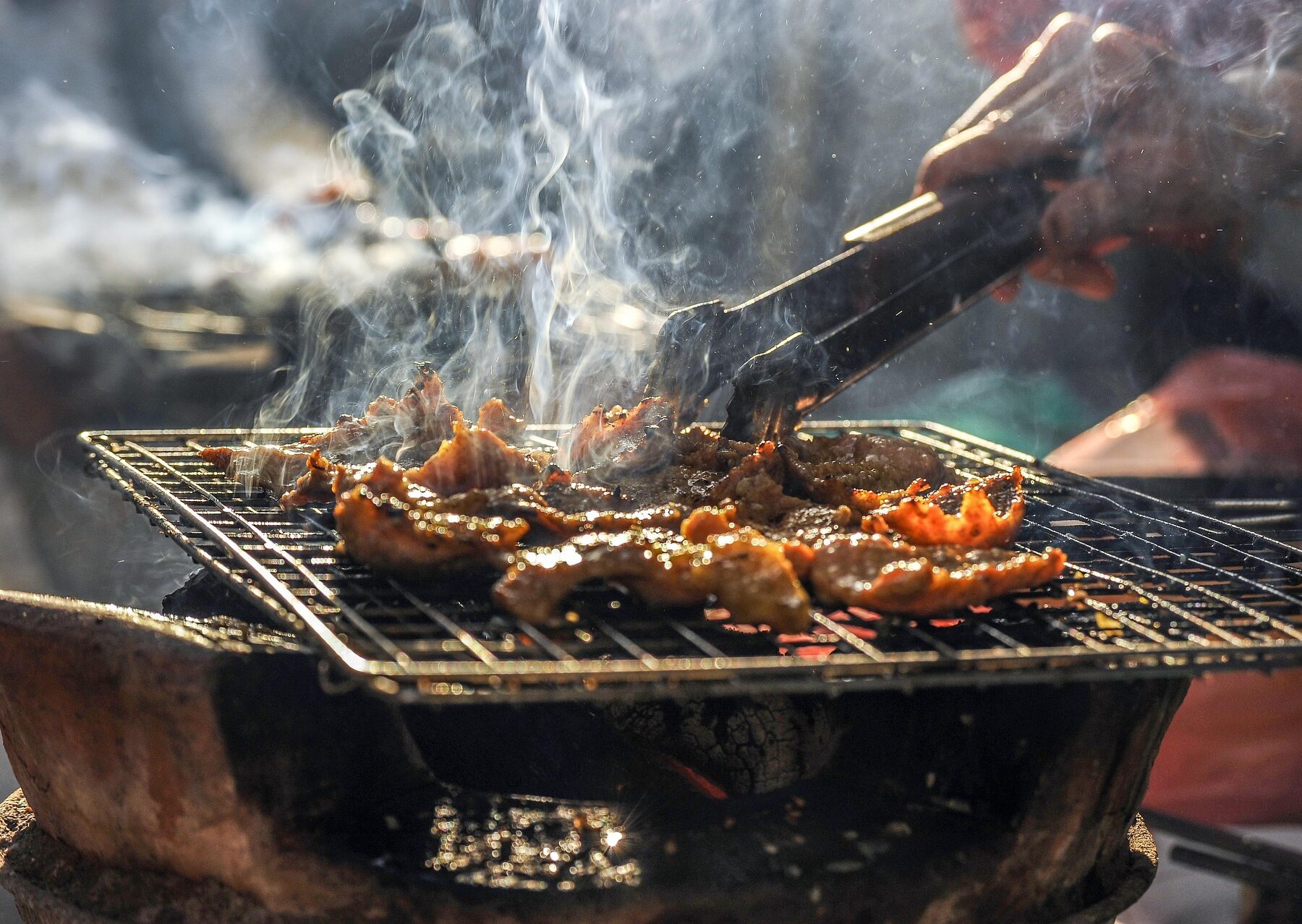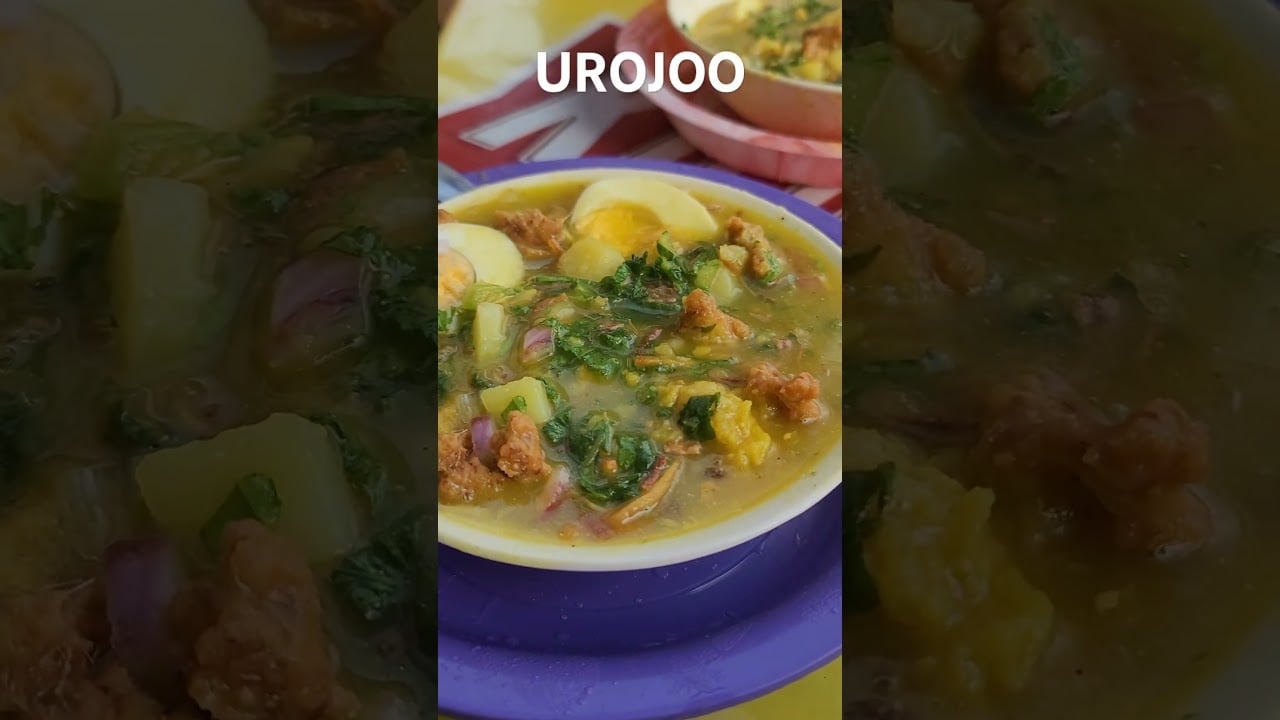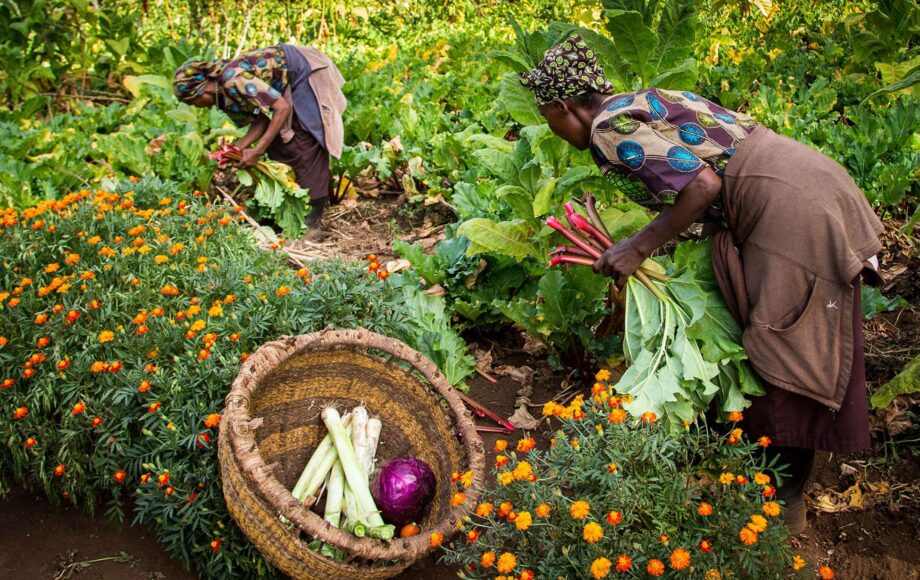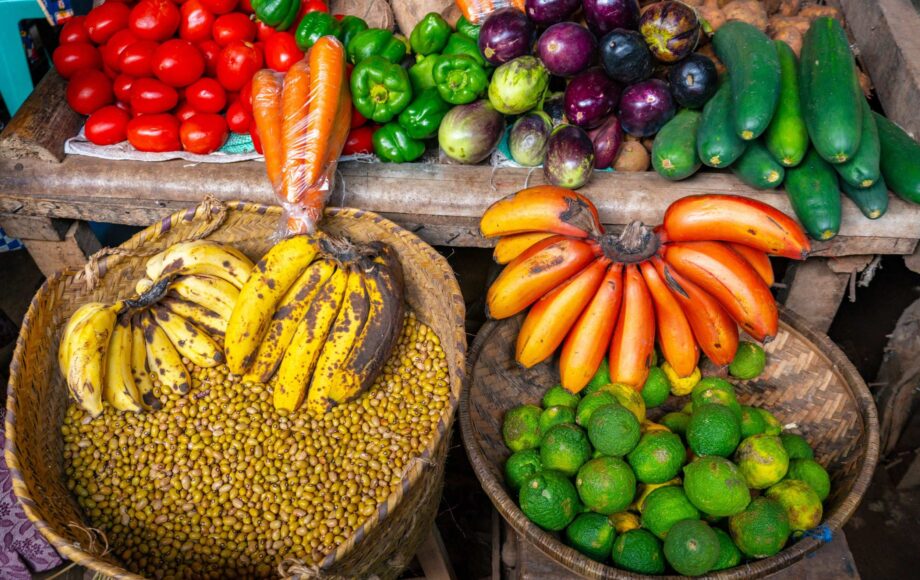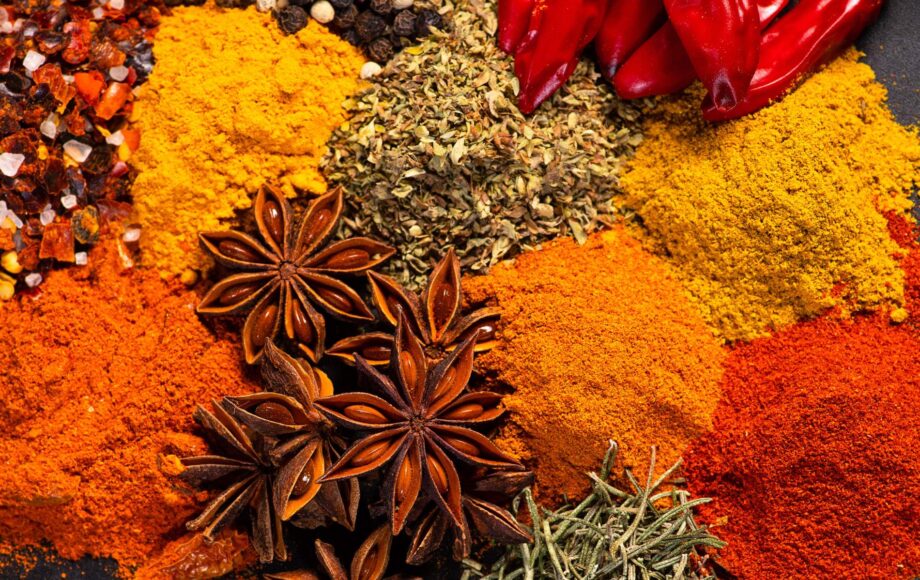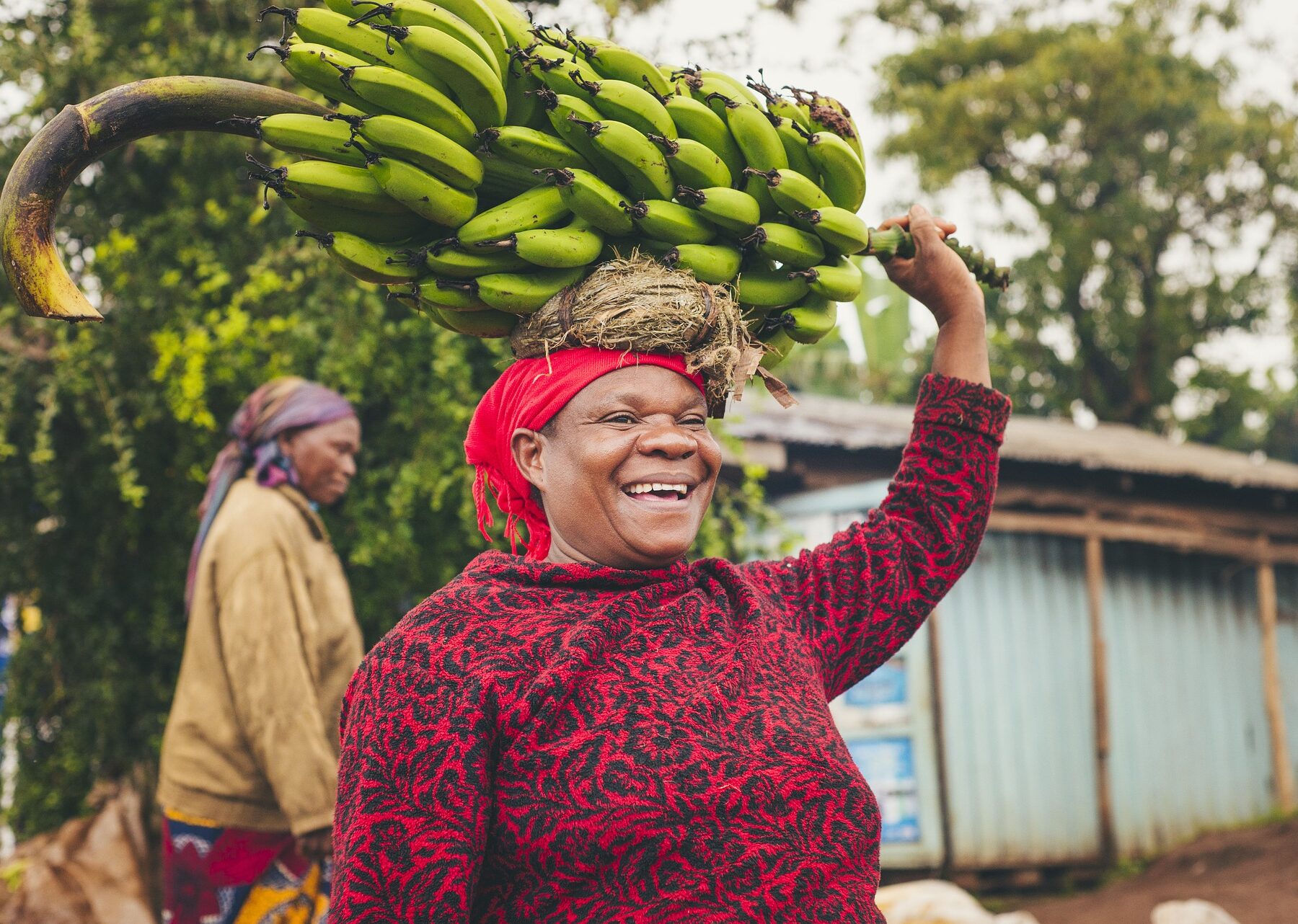
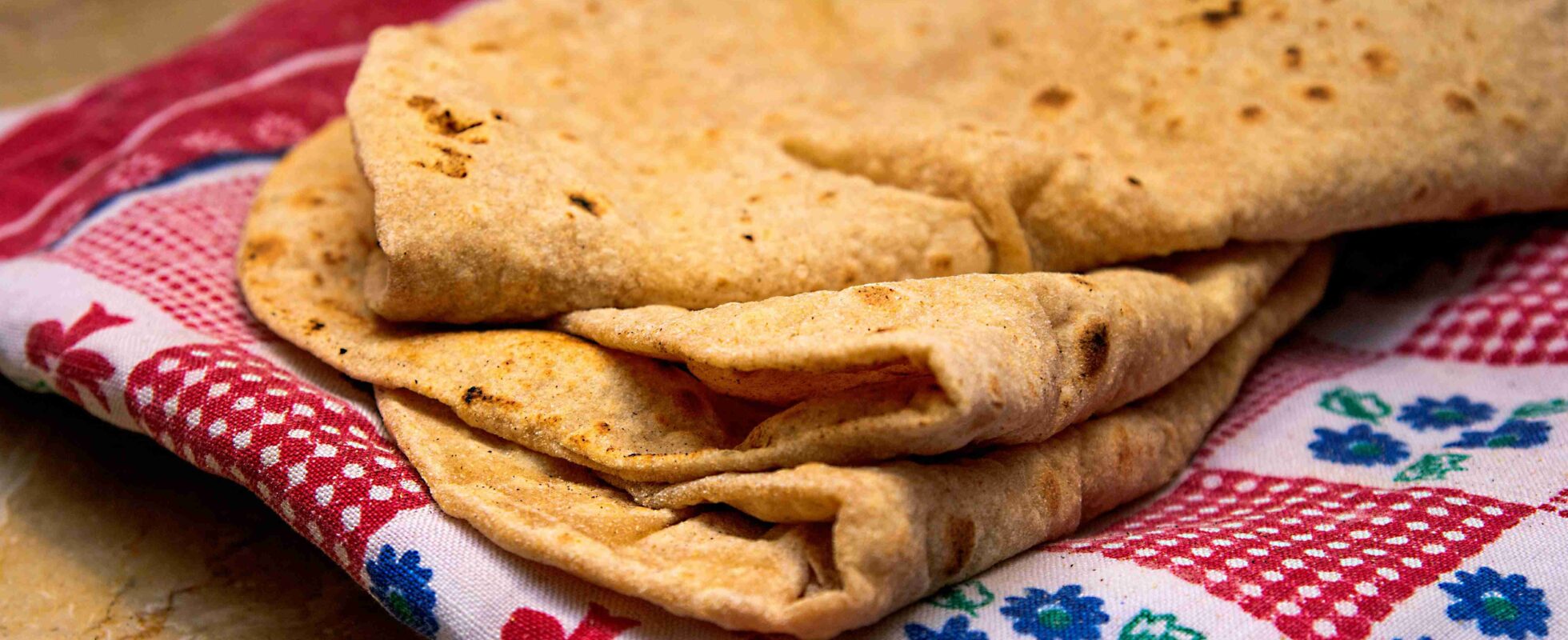
Tanzanian Traditional Food: Top 10 Dishes To Savor The Culture
Nestled in the heart of East Africa lies a land brimming with diversity, both in its landscapes and culinary tapestry. Tanzania, a country renowned for breathtaking safaris and majestic Mount Kilimanjaro, also boasts a rich and diverse gastronomic heritage that is as vibrant as its culture. In this article, we embark on a flavorful expedition to uncover the essence of Tanzanian cuisine, delving into the savory delights and cultural significance of its traditional dishes.
14 February 2024
Tanzanian cuisine is incredibly diverse, with many ingredients and preparation methods varying from region to region. A hallmark of Tanzanian food is its extensive use of spices, including cloves, cinnamon, ginger, and coconut milk, which add rich and aromatic flavors to dishes.
Fruits and Vegetables
Commonly found vegetables in Tanzanian cuisine include beans, spinach, okra, and cassava leaves, while staples like rice and ugali form the backbone of many meals.
Fruit holds a special place in Tanzanian cuisine, with an abundance of tropical delights like papaya, mangoes, and watermelon gracing the tables of households across the country, providing refreshing and nutritious options for locals and visitors alike.
One fascinating aspect of Tanzanian culinary culture is its abundance of plantain varieties, boasting at least 17 distinct types. These versatile fruits are often fried into crispy chips or incorporated into a variety of stews and soups, adding both texture and flavor to traditional dishes.
Meat
With one of the largest populations of livestock in Africa, Tanzania has a rich tradition of incorporating meat into its regional dishes. Among the most favored meats in traditional Tanzanian cuisine are chicken, beef, and goat, each adding a distinct flavor and texture to the culinary landscape.
In regions like Arusha, where tribal traditions hold sway, meat takes center stage on the dining table, with generous portions served to satisfy even the heartiest appetites. In contrast, other parts of the country may feature smaller meat portions, reflecting local culinary preferences and cultural practices.
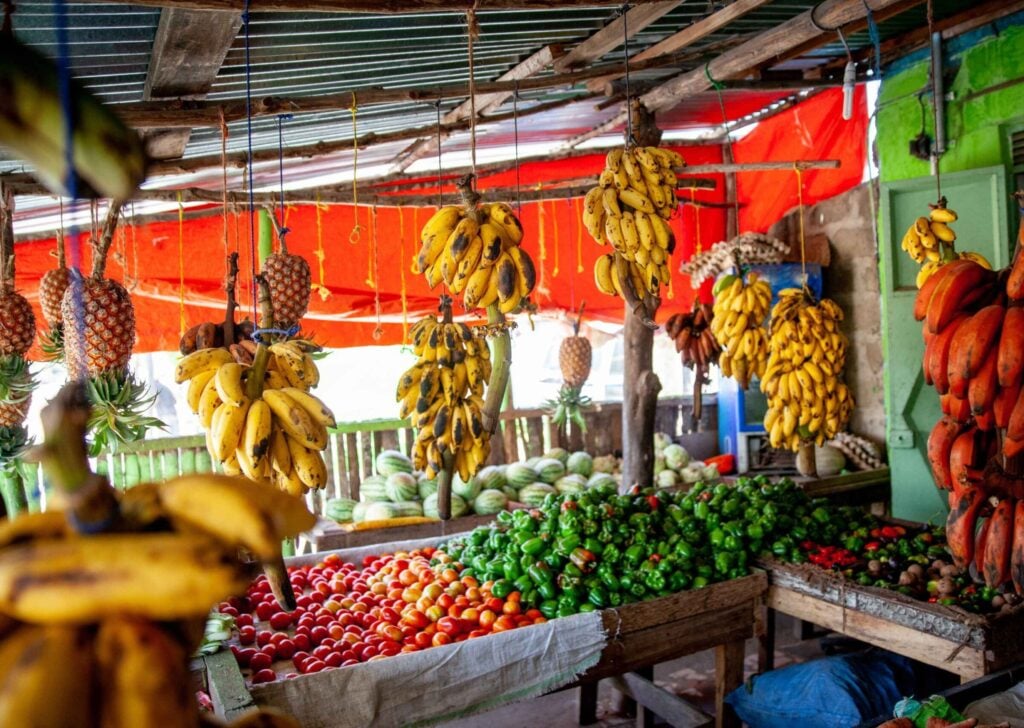
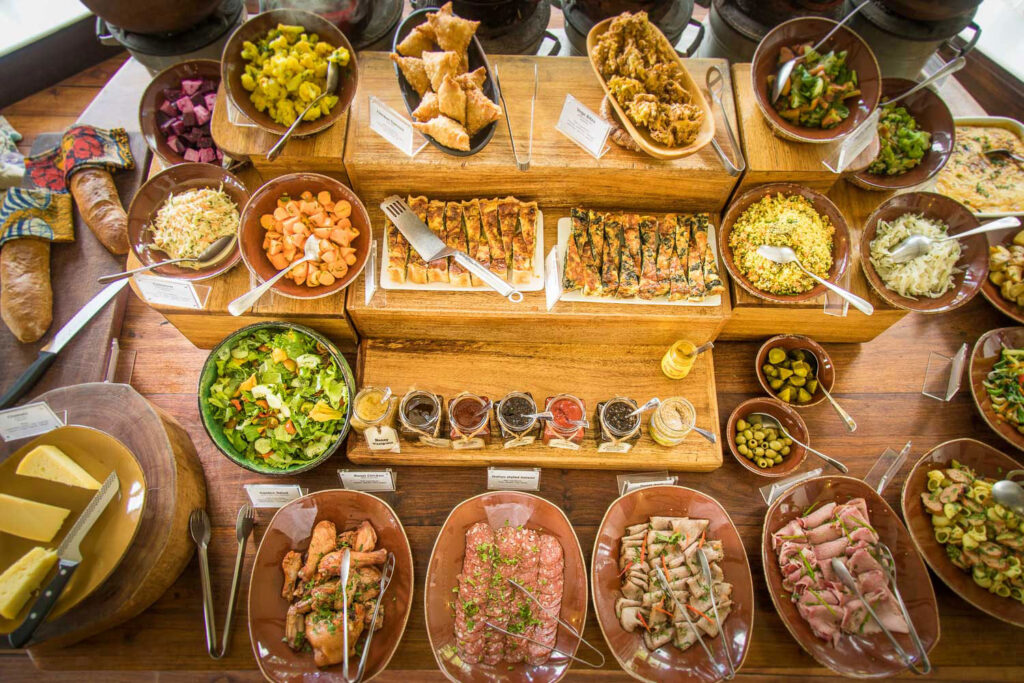
Indian Cuisine Influence
Let’s not forget about the influence of Indian cuisine on Tanzanian food. We can trace it back to the 19th century, when Indian traders began migrating to Tanzania for commerce. This cross-cultural exchange infused Tanzanian cuisine with a medley of spices, cooking techniques and flavors, enriching its culinary heritage and contributing to its diverse tapestry of flavors.
Tanzania and its neighboring country, Kenya, share not only borders but also a culinary bond, with many dishes bearing both similar names and flavors across the regions.
In bustling cities like Dar es Salaam, the influence of Indian cuisine is palpable, with a plethora of Indian-owned restaurants serving up beloved staples such as chapati and samosas, adding a delightful fusion to the local dining scene.
Desserts
When it comes to celebrating special occasions, Tanzanians have a sweet tooth, often indulging in cakes to mark significant events. While each city boasts its own array of dessert shops where one can satisfy their cravings for a sugary delight, it’s worth noting that cakes can be considered a luxury, with prices reflecting their special status in the culinary landscape.
Traditional Tanzanian Food – Cooking Methods
Preparing food in Tanzania is a labor of love that demands patience and time. Unlike quick-fix meals, Tanzanian dishes require a lengthier preparation process, primarily because they’re often cooked in larger portions to accommodate communal dining experiences.
Cooking over wood or charcoal fires adds to the time-intensive nature of Tanzanian cuisine. This traditional method adds a unique smoky flavor but also requires a slower cooking pace. As such, it’s not uncommon for a typical Tanzanian meal to take several hours to prepare, as dishes simmer and flavors meld together over the flickering flames.
In Tanzanian kitchens, where ovens are a rarity, cooking techniques rely heavily on boiling, grilling, and frying using vegetable oil. These methods, though familiar, are executed over open fires, adding an authentic touch to every dish and showcasing the resourcefulness of Tanzanian cooks in adapting to their culinary environment.
In Tanzanian culinary tradition, the preparation of vegetables and cereals often involves boiling, a method that not only softens the ingredients but also allows their natural flavors to shine. Staples like rice and ugali are commonly boiled to perfection, providing a hearty foundation for many meals. Meanwhile, the vibrant freshness of citrus fruits and various vegetables is celebrated as they are frequently enjoyed in their raw, uncooked form, adding a burst of flavor and nutrition to the table.
The use of charcoal fire holds a pivotal role in Tanzanian cooking, contributing not only to the preservation of original flavors but also to the retention of food’s texture and nutritional value. This traditional cooking method imbues dishes with a distinct smokiness while ensuring that meats such as chicken or duck, as well as an array of vegetables, bananas, and cabbages, are cooked to tender perfection over open flames. This creates a symphony of flavors that embody the essence of Tanzanian cuisine.
Top 10 Tanzania Dishes To Try
Below, you’ll find our list of top 10 Tanzanian dishes that offer a delicious insight into the country’s vibrant culinary landscape
1. Ugali Maharage
Ugali reigns supreme as the undisputed king of Tanzanian cuisine, holding the esteemed title of the country’s national meal. It’s not just a dish; it’s a culinary cornerstone deeply ingrained in the daily lives of Tanzanians, who indulge in it approximately four times a week on average.
Step into any neighborhood restaurant, and you’re bound to find ugali proudly listed on the menu, offered at a reasonable price that makes it accessible to all. This beloved staple isn’t just a solo act; it’s often accompanied by an array of flavorful side dishes. Whether paired with vegetables, soup, dagaa (small fish), beans, or various forms of fish, especially in public school settings, ugali forms the heart of many Tanzanian meals.
For those whose livelihoods demand physical endurance, such as fishermen, construction workers, factory laborers, or farmers, ugali is more than just a meal—it’s a source of sustenance and energy. Recognized for its high-energy properties, this hearty dish fuels hardworking individuals through long days of toil, earning its reputation as a vital component of Tanzanian cuisine and culture.
Ugali’s appeal transcends professions and gender roles, as even office employees partake in this beloved Tanzanian dish. It’s not uncommon for ugali to grace the breakfast table, offering a hearty start to the day for many.
In certain Tanzanian tribes, such as the Sukuma, ugali holds a cultural significance as a dish primarily associated with men. However, its popularity extends far beyond gender lines, with both men and women savoring its comforting taste and satisfying texture.
Crafted from a simple yet ingenious combination of hot water and flour, ugali boasts a firm consistency that pairs perfectly with a variety of flavorful accompaniments. While maize flour remains the most prevalent choice, other grains like millet, cassava, and sorghum also lend their unique characteristics to this quintessential Tanzanian dish.
To elevate both taste and nutritional value, it’s common practice to blend two or more types of flour, such as corn and millet or corn and sorghum.
2. Wali Na Maharage
Wali Maharage, a rice and bean dish, holds a cherished place on Tanzanian dinner tables and is often the star of social gatherings, from religious festivals and weddings to somber occasions like funerals, as well as festive holiday celebrations.
Crafted with care and infused with love, Wali Maharage is a true culinary delight, prepared with meticulous attention to detail to ensure its irresistible flavor and satisfying texture.
Traditionally, the beans and rice are cooked separately before being united to create this flavorful dish. While simplicity reigns in seasoning, with only salt, oil, and coconut used traditionally, modern renditions may incorporate a broader array of flavors.
To prepare the beans, you need carrots, onions, tomatoes, oil, green peppers, and an assortment of seasonings, resulting in a rich and aromatic bean mixture. Once ready, the beans are served in a bowl, while the rice is delicately plated—often enjoyed using the hands for an authentic dining experience.
When served in restaurants, Wali Maharage is accompanied by two delectable side dishes: a vibrant green vegetable such as matembele or mchicha, offering a refreshing contrast to the hearty main dish, and a special sauce known as mchuzi ya nyama, infused with a hint of meaty goodness to elevate every bite.
3. Pilau
Tanzanian pilau dishes are a true symphony of spices, with black peppercorns, cloves, cumin, cardamom, and cinnamon taking center stage to create the signature pilau masala blend. Renowned for its rich flavor profile and aroma, pilau holds a cherished place in Tanzanian cuisine.
In Tanzania, the art of spicing extends beyond mere seasoning—it’s a culinary heritage deeply ingrained in every national occasion. From festive gatherings to everyday meals, pilau takes pride of place on the dining table, earning its status as a culinary icon alongside the revered ugali.
Versatility is another hallmark of Tanzanian pilau, offering a delightful array of options to suit every palate. Whether enjoyed as a simple vegetable dish or paired with succulent chicken, beef, or lamb, pilau embodies the essence of a one-pot wonder—a hearty and flavorful meal that satisfies both the appetite and the soul.
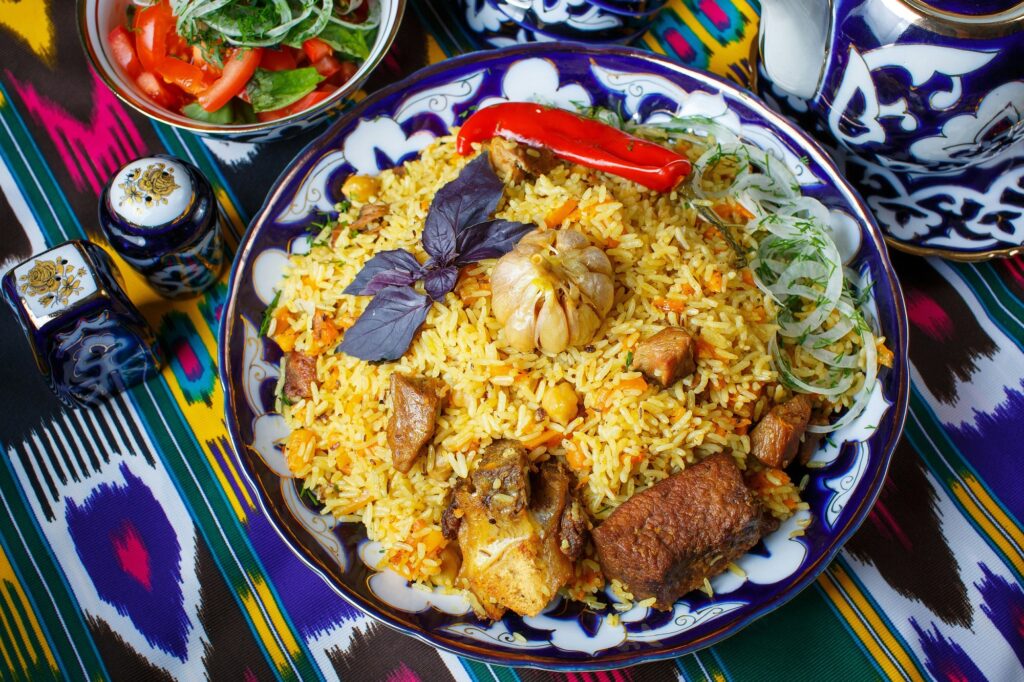
4. Octopus Coconut Curry
Octopus holds a special place in Tanzanian seafood cuisine, offering a delectable canvas for culinary creativity. Among the many enticing preparations, one standout favorite is the sumptuous coconut curry known as “pweza wa nazi”, a beloved traditional dish hailing from Zanzibar.
This tantalizing creation isn’t just delicious; it’s also deeply satisfying, showcasing the rich flavors of Tanzania’s coastal bounty. While octopus takes the spotlight in this dish, it’s worth noting that you can easily substitute it with any other locally sourced fish or seafood for a similarly delightful experience.
Tenderizing octopus requires a bit of finesse. Traditionally, fishermen would gently beat the octopus on the beach after catching it, a method that helps to tenderize the meat. However, for optimal tenderness, culinary experts choose to pre-boil it before incorporating it into the curry. This step ensures that the octopus absorbs the rich flavors of the coconut curry as it simmers to perfection.
Given the abundance of fresh seafood in Tanzania, indulging in an octopus dish is a culinary adventure not to be missed.
5. Urojo
Urojo, a beloved culinary gem originating from Zanzibar, holds a cherished place in the hearts and homes of locals, where it’s a frequent fixture on weekly menus.
What makes urojo truly special is its adaptability, with each household infusing their own unique flair into this iconic dish. From the selection of ingredients to the cooking methods employed, urojo recipes vary widely, often reflecting the seasonality of local produce and the preferences of the cook.
A veritable cornucopia of flavors and textures, urojo is a hearty soup brimming with a diverse array of ingredients. From tender potatoes to flavorful mishikaki, boiled eggs to crispy kachori, and a medley of vegetables to crunchy fried cassava pieces, every spoonful offers a delightful surprise for the palate.
Available for purchase from street vendors in the evenings, urojo is not just a meal; it’s a culinary experience that captures the essence of Zanzibar’s vibrant food culture.
6. Red Snapper
Red Snapper holds a distinguished place in Tanzanian cuisine, prized for its delicate flavor and tender texture. A culinary delight, this exquisite fish is often prepared with simplicity in mind, marinated lightly and then expertly grilled to perfection.
Versatile and flavorful, red snapper can be enjoyed in various ways, whether as the star ingredient in a fragrant curry or as the centerpiece of a well-balanced meal accompanied by rice and vegetables.
While readily available at food stalls across Tanzania, preparing red snapper at home is a straightforward endeavor. However, it’s crucial not to over-marinate the fish, as prolonged exposure to the marinade can compromise its natural flavor and texture. Nonetheless, red snapper’s mild taste lends itself beautifully to absorbing spices and seasonings, allowing for endless culinary creativity.
7. Mandazi
Tanzanians love munching on mandazi as a snack. While versatile enough to enjoy at any hour, many opt to kickstart their mornings with mandazi, pairing it with comforting oatmeal or a steaming cup of tea for a satisfying breakfast.
Crafting mandazi begins with a simple yet delightful dough made from a blend of eggs, sugar, wheat flour, bicarbonate of soda, and fresh milk. After a brief resting period, the dough is shaped into various forms, from triangles to rectangles or even spheres, before taking a dip in hot oil for a deep-fry session until achieving a crispy, golden brown perfection.
As the day transitions into evening, mandazi remains a beloved snack choice in Tanzania’s coastal regions like Dar es Salaam, Tanga, and Pwani. Here, it’s often enjoyed alongside a steaming cup of tea and a side of beans, offering a comforting and satisfying way to wind down after a long day.
Furthermore, mandazi’s versatility extends to special occasions, where it makes a prominent appearance during Muslim wedding ceremonies.

8. Mchuzi Wa Biringani
Mchuzi wa biringani is among the quickest and simplest Tanzanian dishes you can prepare if you don’t have much time. At its core, this dish revolves around thinly sliced eggplant, sautéed to perfection in oil until tender.
But the magic doesn’t stop there. Complementing the eggplant are a medley of onions, ginger, tomatoes, garlic, and carrots, adding layers of flavor and texture to the dish. To further enrich the sauce and enhance the dish’s consistency, chefs sometimes incorporate potatoes, lending their starchiness to thicken the mixture.
This versatile dish can be served either as a hearty soup or as a flavorful eggplant curry, depending on personal preference. For those seeking an extra dimension of taste, the addition of dairy or coconut milk elevates the flavors of the vegetables to new heights, creating a luscious and satisfying culinary experience.
9. Mshikaki
Mshikaki, a beloved Tanzanian delicacy, tantalizes taste buds with its succulent beef marinated in a flavorful blend of ginger, lemon, and chili peppers, before being expertly skewered and grilled over charcoal.
This mouthwatering dish isn’t just a meal—it’s a cultural experience enjoyed by Tanzanians of all ages, particularly as a popular snack option. Often paired with roasted potatoes to create the irresistible “chips mshikaki”, it’s also commonly served alongside fried cassava and the delectable sweetness of roasted or smoked plantains.
Come evening, the streets of Tanzania come alive with the aroma of sizzling mshikaki, as street food vendors set up grills to cater to hungry passersby.
Mshikaki isn’t just confined to street-side enjoyment; it’s a versatile dish that finds its way into stores, bars, and music venues across the country. Paired with refreshing beverages like beer or wine, mshikaki transforms any gathering into a celebration of Tanzanian flavors and traditions.
10. Mchuzi Wa Samaki
Tanzanian cuisine boasts a standout dish that captures the essence of coastal flavors: mchuzi wa samaki, a delectable fish stew renowned for its versatility and rich taste. While the specific fish used may vary depending on the region, the dish consistently delivers a satisfying culinary experience.
In northern Tanzania, “kambale fish” takes center stage, infusing the stew with its unique flavor profile. Meanwhile, in the central region, “migebuka fish” lends its distinctive taste to the dish, showcasing the diverse array of fish varieties found across the country. And in Lake Zone locations, you’ll be sure to find dishes favoring tilapia or Nile perch.
Beyond the fish, mchuzi wa samaki features a blend of tomatoes, coconut, green peppers, carrots, and onions. To enhance the dish further, Tanzanian chefs may infuse it with the zesty tang of lemon juice and the aromatic warmth of curry powder.
Culture and food are intertwined
Peek behind the scenes and learn more about harvests, spices and culture.
A Typical Tanzanian Meal
In Tanzania, meals are enjoyed in a communal setting, often seated at a low table or gathered on a floor mat. Before diving into the feast, a cherished tradition involves washing one’s hands with warm water at the table, symbolizing a cleansing ritual before partaking in the meal.
An important aspect of Tanzanian dining etiquette is the use of the right hand only, regardless of handedness, as it is considered the “pure hand,” while the left hand is deemed “dirty.”
When the spread is laid out, it’s typically presented on a large platter, with everyone gathering around to help themselves. The centerpiece of many meals is a mound of rice, sculpted into a hill shape, among an array of delicious dishes.
Even with multiple diners, salad is typically served on a single plate, facilitating easy sharing and fostering a sense of togetherness. Tanzanian tableware is simple and functional, with medium-sized plates and minimal utensils, allowing the focus to remain on the flavors and enjoyment of the meal.
For a truly authentic dining experience, dinner is often served on a mat on the ground, surrounded by symbolic arrangements of bananas, leaves, and coconuts. During gatherings, bridge tables may be used, featuring large soup plates and smaller soup cups for the main courses.
In line with tradition, Tanzanians don’t use utensils and prefer eating with their hands—a practice believed to enhance the taste and experience of the meal, embodying the essence of Tanzanian hospitality and culinary culture.
Breakfast
For breakfast in Tanzania, a delightful array of options awaits, ranging from savory to sweet delights. Among the favorites are flatbread or chapati, providing a hearty start to the day with their satisfying texture and flavor. For those with a sweet tooth, mandazi, a type of fried donut, offers a delectable treat that pairs perfectly with a cup of tea or coffee.
Adding to the morning feast are vitumbua, delectable coconut and cardamom donuts that boast a unique blend of flavors and aromas, sure to tantalize the taste buds. And let’s not forget about samosas, savory pastries filled with a variety of delicious fillings, offering a satisfying and flavorful breakfast option.
All of this is enjoyed to be eaten in the morning alongside a cup of tea. Or, as the locals would say, “chai.”

Lunch
In Tanzania, the largest meal of the day is lunch, and it typically occurs at 1:00 PM.
At the heart of the lunchtime spread are staple foods like ugali or rice, providing a satisfying base for the meal. Alongside these grains, beans take a prominent place, offering protein and depth of flavor to the dish. Vegetables play a vital role in adding freshness and nutrition, with mchicha, a type of spinach, often making an appearance to add vibrant color and earthy flavors.
To complete the meal, chapati bread adds a touch of warmth and comfort, perfect for scooping up savory stews or savoring alongside the other dishes.
Dinner
As the day winds down, Tanzanian dinners offer a familiar and comforting continuation of the culinary journey. Similar to lunch, supper typically revolves around staple dishes like ugali or rice, accompanied by beans, vegetables, and chapati bread.
While supper shares many similarities with lunch, there’s often the occasional addition of a meat piece, adding an extra layer of indulgence and protein to the meal. However, dinner is generally less extravagant than lunch, focusing more on simplicity and nourishment.
In Tanzanian dining tradition, dessert is not a common occurrence after dinner. Instead, the meal is rounded off with the refreshing sweetness of fruit, served alongside the main course to provide a satisfying and wholesome conclusion to the day’s culinary offerings.
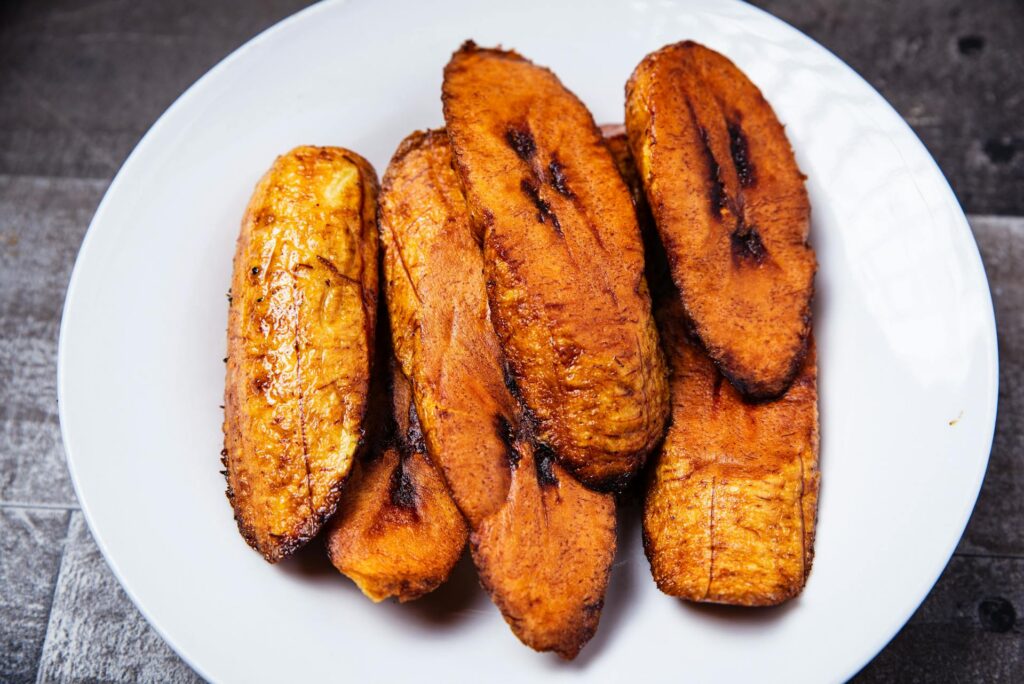

Drinks Or Beverages
In Tanzania, chai (tea) reigns supreme as the undisputed champion of beverages, cherished for its simplicity and comforting warmth. Easy to make and enjoyed throughout the day, chai holds a special place in Tanzanian culture, serving as a beloved companion to meals and social gatherings alike.
Beyond its role in traditional beverages, plantains play a significant role in Tanzania’s alcoholic drinks as well. Among the nation’s prized libations is mbege, a national beverage hailing from the Kilimanjaro area. Crafted from fermented bananas, mbege offers a unique and refreshing taste that captures the essence of Tanzania’s rich culinary heritage.
Snacks
A beloved snack enjoyed across Tanzania, the samosa is a culinary delight that knows no bounds, featuring a deep-fried pastry shell generously filled with a flavorful mixture of beef mince, garlic, spices, and onions.
However, the samosa’s appeal extends even further with its vegetarian variation, offering a delicious alternative for those with dietary preferences or restrictions.
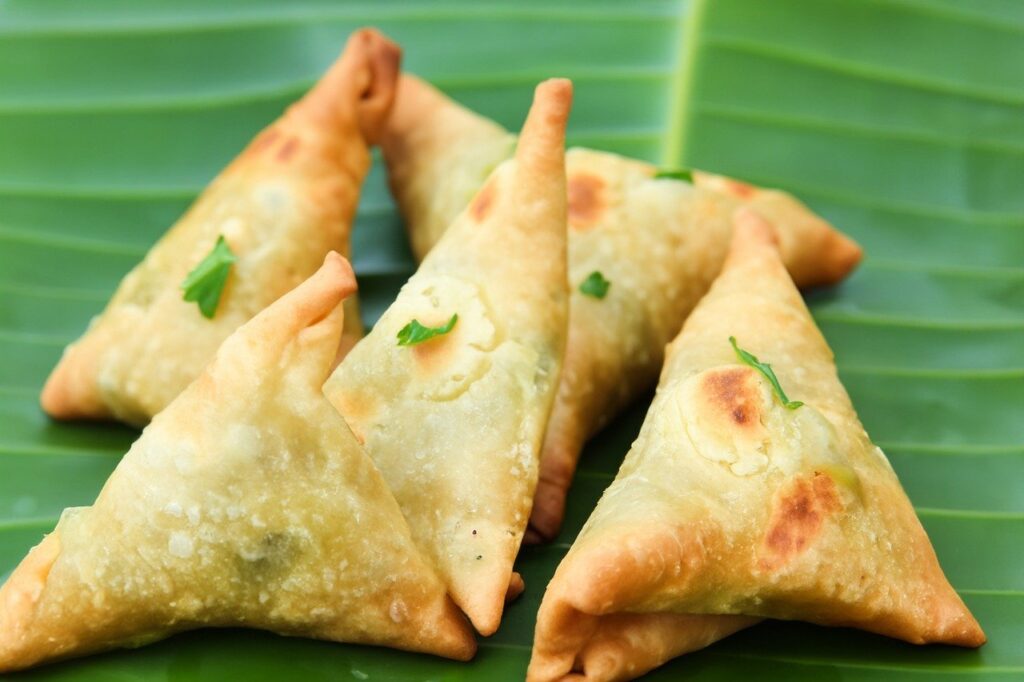
Side Dishes
Wali wa nazi stands out as one of Tanzania’s most beloved side dishes, offering a delightful variation of rice that’s as flavorful as it is comforting. Simplicity reigns in this dish, as rice is seasoned with just a touch of salt and boiled to perfection in a blend of coconut milk and water.
Comparable to the renowned East African dish nasi lemak from Malaysia, wali wa nazi captivates with its rich coconut-infused aroma and creamy texture. Its versatility knows no bounds, serving as the perfect accompaniment to a variety of curries and stews, adding depth and richness to every bite.
Beyond Tanzania’s borders, wali wa nazi finds a home in the cuisines of neighboring nations like Kenya and Uganda.
Tanzania Food Tours
Joining a culinary tour might be a good idea if you’re traveling to Tanzania and would like to discover much more about the local cuisine.
With a native guide leading the way, you’ll have the opportunity to delve deeper into the flavors, traditions, and stories behind each dish, ensuring a truly authentic culinary experience.
Guided tours offer a unique blend of expertise and exploration, whisking you away to the city’s hidden culinary gems, bustling marketplaces, and vibrant street food stands that you might otherwise overlook. From savoring succulent grilled meats to indulging in fragrant stews and sampling exotic fruits, each stop on the tour promises a tantalizing journey through Tanzania’s diverse culinary landscape.
While it’s certainly possible to navigate the food scene on your own, a guided tour provides a curated experience that ensures you won’t miss out on any of the must-try dishes or hidden culinary treasures.
So, whether you’re a seasoned foodie or simply curious to explore the flavors of Tanzania, a culinary tour offers the perfect opportunity to embark on a gastronomic journey like no other, guided by those who know the local cuisine best.
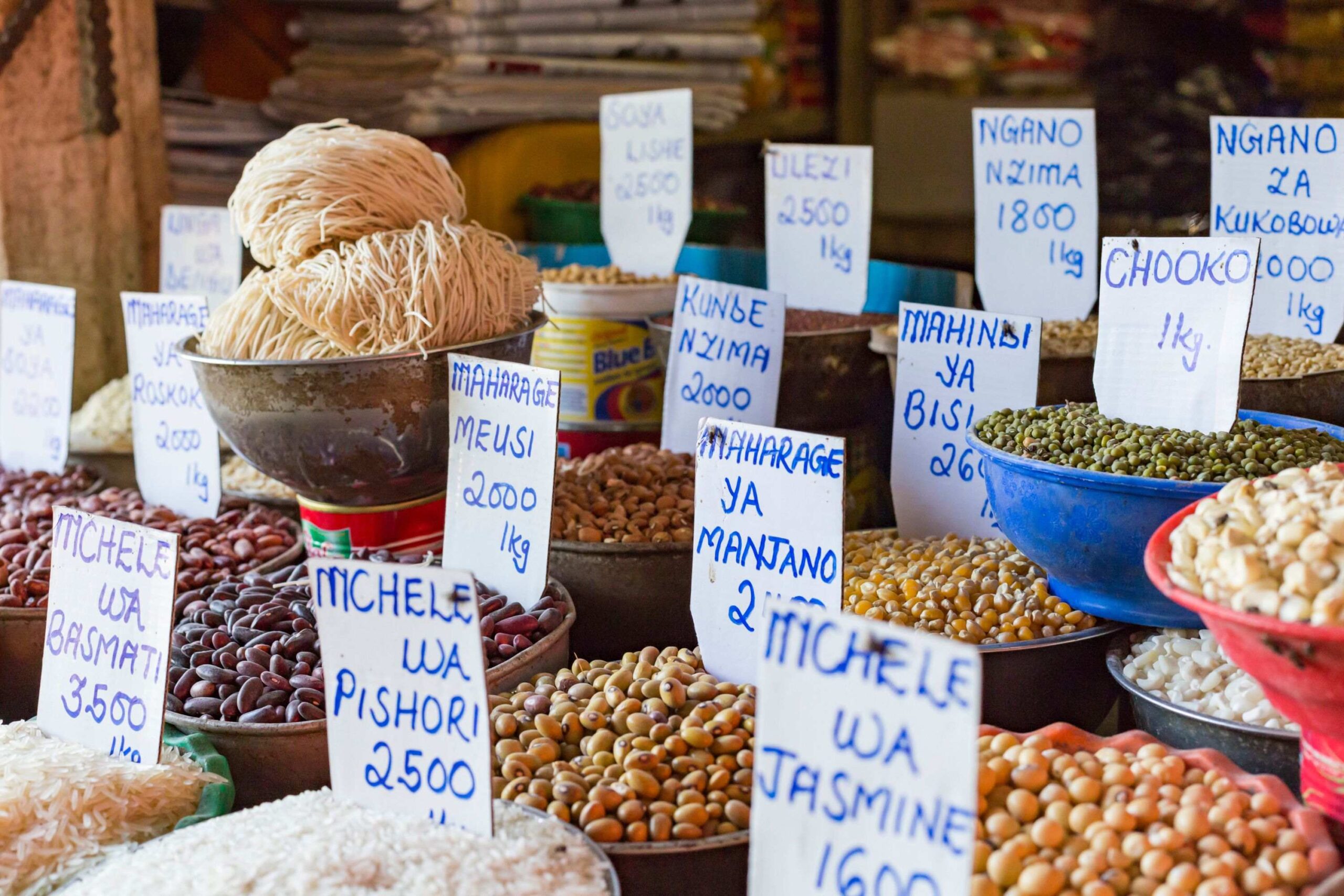
Besides food tours, there are even more ways to experience local cuisine. Discover our top three highlights to enjoy yummy dishes and find out how you can enjoy the taste of Tanzania and Zanzibar back home.
Final Thoughts
Tanzanian cuisine is a reflection of the country’s rich cultural diversity, with each region offering its own unique culinary traditions and flavors. With over 125 tribes contributing to the tapestry of Tanzanian food, it’s no surprise that the dishes vary significantly from one region to another.
Despite this diversity, certain dishes have emerged as universal favorites, enjoyed by Tanzanians from all walks of life. From the comforting staple of ugali to the aromatic flavors of mchuzi wa samaki, these top 10 dishes offer a taste of Tanzania’s culinary heritage that transcends regional boundaries.
Let us create your tailor-made trip
Receive a free, no obligation quote
Start planning your dream trip

Call an expert
Our specialists are here to assist you
USA: +1 518 634 1139 UK: +44 20 3808 4213 other countries


